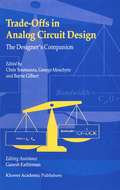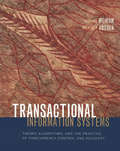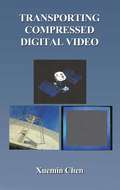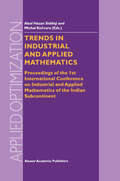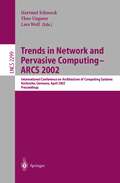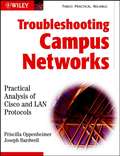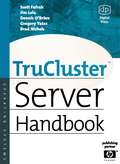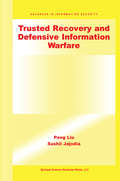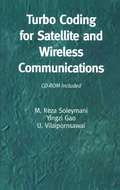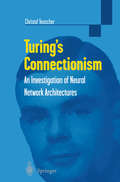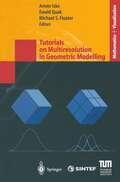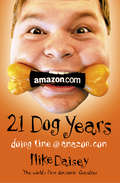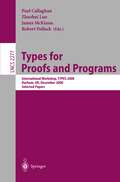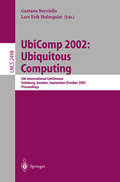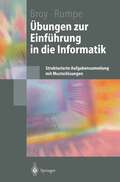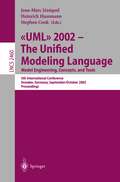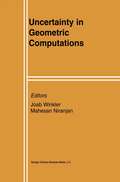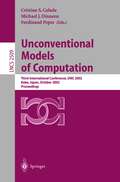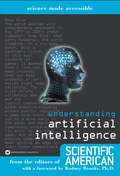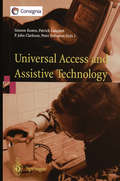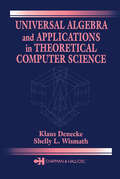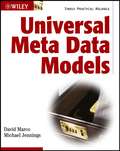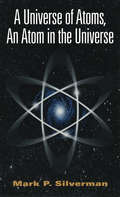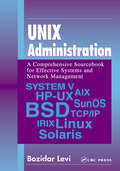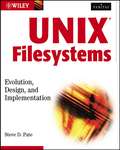- Table View
- List View
Trade-Offs in Analog Circuit Design: The Designer's Companion
by Chris Toumazou George S. Moschytz Barrie GilbertAs the frequency of communication systems increases and the dimensions of transistors are reduced, more and more stringent performance requirements are placed on analog circuits. This is a trend that is bound to continue for the foreseeable future and while it does, understanding performance trade-offs will constitute a vital part of the analog design process. It is the insight and intuition obtained from a fundamental understanding of performance conflicts and trade-offs, that ultimately provides the designer with the basic tools necessary for effective and creative analog design. Trade-offs in Analog Circuit Design, which is devoted to the understanding of trade-offs in analog design, is quite unique in that it draws together fundamental material from, and identifies interrelationships within, a number of key analog circuits. The book covers ten subject areas: Design methodology, Technology, General Performance, Filters, Switched Circuits, Oscillators, Data Converters, Transceivers, Neural Processing, and Analog CAD. Within these subject areas it deals with a wide diversity of trade-offs ranging from frequency-dynamic range and power, gain-bandwidth, speed-dynamic range and phase noise, to tradeoffs in design for manufacture and IC layout. The book has by far transcended its original scope and has become both a designer's companion as well as a graduate textbook. An important feature of this book is that it promotes an intuitive approach to understanding analog circuits by explaining fundamental relationships and, in many cases, providing practical illustrative examples to demonstrate the inherent basic interrelationships and trade-offs. Trade-offs in Analog Circuit Design draws together 34 contributions from some of the world's most eminent analog circuits-and-systems designers to provide, for the first time, a comprehensive text devoted to a very important and timely approach to analog circuit design.
Transactional Information Systems: Theory, Algorithms, and the Practice of Concurrency Control and Recovery (The Morgan Kaufmann Series in Data Management Systems)
by Gerhard Weikum Gottfried VossenTransactional Information Systems is the long-awaited, comprehensive work from leading scientists in the transaction processing field. Weikum and Vossen begin with a broad look at the role of transactional technology in today's economic and scientific endeavors, then delve into critical issues faced by all practitioners, presenting today's most effective techniques for controlling concurrent access by multiple clients, recovering from system failures, and coordinating distributed transactions. The authors emphasize formal models that are easily applied across fields, that promise to remain valid as current technologies evolve, and that lend themselves to generalization and extension in the development of new classes of network-centric, functionally rich applications. This book's purpose and achievement is the presentation of the foundations of transactional systems as well as the practical aspects of the field what will help you meet today's challenges.Provides the most advanced coverage of the topic available anywhere--along with the database background required for you to make full use of this material.Explores transaction processing both generically as a broadly applicable set of information technology practices and specifically as a group of techniques for meeting the goals of your enterprise.Contains information essential to developers of Web-based e-Commerce functionality--and a wide range of more "traditional" applications.Details the algorithms underlying core transaction processing functionality.
Transporting Compressed Digital Video (The Springer International Series in Engineering and Computer Science #674)
by Xuemin ChenThe purpose of Transporting Compressed Digital Video is to introduce fundamental principles and important technologies used in design and analysis of video transport systems for many video applications in digital networks. In the past two decades, progress in digital video processing, transmission, and storage technologies, such as video compression, digital modulation, and digital storage disk, has proceeded at an astounding pace. Digital video compression is a field in which fundamental technologies were motivated and driven by practical applications so that they often lead to many useful advances. Especially, the digital video-compression standards, developed by the Moving Pictures Expert Group (MPEG) of the International Organization for Standardization (ISO) and the International Electrotechnical Commission (IEC), have enabled many successful digital-video applications. These applications range from digital-video disk (DVD) and multimedia CDs on a desktop computer, interactive digital cable television, to digital satellite networks. MPEG has become the most recognized standard for digital video compression. MPEG video is now an integral part of most digital video transmission and storage systems. Nowadays, video compression technologies are being used in almost all modern digital video systems and networks. Not only is video compression equipment being implemented to increase the bandwidth efficiency of communication systems, but video compression also provides innovative solutions to many related vid- networking problems. The subject of Transporting Compressed Digital Video includes several important topics, in particular video buffering, packet scheduling, multiplxing and synchronization.
Trends in Industrial and Applied Mathematics: Proceedings of the 1st International Conference on Industrial and Applied Mathematics of the Indian Subcontinent (Applied Optimization #72)
by Abul Hasan Siddiqi M. KocvaraAn important objective of the study of mathematics is to analyze and visualize phenomena of nature and real world problems for its proper understanding. Gradually, it is also becoming the language of modem financial instruments. To project some of these developments, the conference was planned under the joint auspices of the Indian Society of Industrial and Applied mathematics (ISlAM) and Guru Nanak Dev University (G. N. D. U. ), Amritsar, India. Dr. Pammy Manchanda, chairperson of Mathematics Department, G. N. D. U. , was appointed the organizing secretary and an organizing committee was constituted. The Conference was scheduled in World Mathematics Year 2000 but, due one reason or the other, it could be held during 22. -25. January 2001. How ever, keeping in view the suggestion of the International Mathematics union, we organized two symposia, Role of Mathematics in industrial development and vice-versa and How image of Mathematics can be improved in public. These two symposia aroused great interest among the participants and almost everyone participated in the deliberations. The discussion in these two themes could be summarized in the lengthy following lines: "Tradition of working in isolation is a barrier for interaction with the workers in the other fields of science and engineering, what to talk of non-academic areas, specially the private sector of finance and industry. Therefore, it is essential to build bridges within in stitutions and between institutions.
Trends in Network and Pervasive Computing - ARCS 2002: International Conference on Architecture of Computing Systems, Karlsruhe, Germany, April 8-12, 2002 Proceedings (Lecture Notes in Computer Science #2299)
by Hartmut Schmeck Theo Ungerer Lars WolfTroubleshooting Campus Networks: Practical Analysis of Cisco and LAN Protocols
by Priscilla Oppenheimer Joseph BardwellAll network designers and administrators want their campus LANs to run efficiently. This book provides tips and techniques for using protocol analyzers and other tools to recognize problems for both Cisco and multiprotocol traffic patterns. * Focuses on troubleshooting problems that arise from the Cisco routers inter-operating with many other network protocols * Covers both legacy and cutting-edge technologies * Authors are respected in the field for their teaching and training development skills in network troubleshooting
TruCluster Server Handbook (HP Technologies)
by Scott Fafrak Jim Lola Dennis O'Brien Gregory Yates Brad NicholsThe TruCluster Server Handbook authoritatively details how to plan, design, install, configure, and administer a cluster of Tru64 UNIX systems. The book explains how to configure and optimize hardware underlying a TruCluster server, including storage servers so critical to running a high-end cluster operation. This book provides best practices and techniques drawn from the authors' extensive experiences in the field with systems designers, systems managers, developers, and users. The authors include a former Tru64 UNIX Technical Group Leader with HP's Consulting Division and a top industry figure, and two former TruCluster Server Team Leaders with the Customer Support Center.Learn to install TruCluster Server from the ground upGet the most out of your cluster environment with the authors' practical tips and tricksAttain availability, scalability, and simplified manageability in your IT systems operation
Trusted Recovery and Defensive Information Warfare (Advances in Information Security #4)
by Peng Liu Sushil JajodiaInformation security concerns the confidentiality, integrity, and availability of information processed by a computer system. With an emphasis on prevention, traditional information security research has focused little on the ability to survive successful attacks, which can seriously impair the integrity and availability of a system. Trusted Recovery And Defensive Information Warfare uses database trusted recovery, as an example, to illustrate the principles of trusted recovery in defensive information warfare. Traditional database recovery mechanisms do not address trusted recovery, except for complete rollbacks, which undo the work of benign transactions as well as malicious ones, and compensating transactions, whose utility depends on application semantics. Database trusted recovery faces a set of unique challenges. In particular, trusted database recovery is complicated mainly by (a) the presence of benign transactions that depend, directly or indirectly on malicious transactions; and (b) the requirement by many mission-critical database applications that trusted recovery should be done on-the-fly without blocking the execution of new user transactions. Trusted Recovery And Defensive Information Warfare proposes a new model and a set of innovative algorithms for database trusted recovery. Both read-write dependency based and semantics based trusted recovery algorithms are proposed. Both static and dynamic database trusted recovery algorithms are proposed. These algorithms can typically save a lot of work by innocent users and can satisfy a variety of attack recovery requirements of real world database applications. Trusted Recovery And Defensive Information Warfare is suitable as a secondary text for a graduate level course in computer science, and as a reference for researchers and practitioners in information security.
Turbo Coding for Satellite and Wireless Communications (The Springer International Series in Engineering and Computer Science #702)
by M. Reza Soleymani Yingzi Gao U. Vilaipornsawai6. 5 137 7 Performance of BTCs and 139 their Applications 7. 1 Introduction 139 7. 2 Some Results from the Literatures 139 7. 3 Applications of Block Turbo Codes. 142 7. 3. 1 Broadband Wireless Access Standard 144 7. 3. 2 Advanced Hardware Architectures (AHA) 145 7. 3. 3 COMTECH EF DATA 147 7. 3. 4 Turbo Concept 149 7. 3. 5 Paradise Data Com 150 Summary 7. 4 151 8 Implementation Issues 153 8. 1 Fixed-point Implementation of Turbo Decoder 153 8. 1. 1 Input Data Quantization for DVB-RCS Turbo Codes 155 8. 1. 2 Input Data Quantization for BTC 157 8. 2 The Effect of Correction Term in Max-Log-MAP Algorithm 159 8. 3 Effect of Channel Impairment on Turbo Codes 163 8. 3. 1 System Model for the Investigation of Channel Impairments 163 8. 3. 2 Channel SNR Mismatch 164 8. 3. 2. 1 Simulation Results 165 8. 3. 3 Carrier Phase Recovery 170 8. 3. 3. 1 The Effect of Phase Offset on the Performance of RM Turbo Codes 170 8. 3. 3. 2 The Effect of Preamble Size on the Performance of RM Turbo Codes 170 8. 3. 3. 3 Simulation Results 170 8. 4 Hardware Implementation of Turbo Codes 171 8. 5 Summary 175 9 177 Low Density Parity Check Codes 9. 1 Gallager Codes: Regular Binary LDPC Codes 177 9. 2 Random Block Codes 178 9. 2. 1 Generator Matrix 179 9. 2.
Turing’s Connectionism: An Investigation of Neural Network Architectures (Discrete Mathematics and Theoretical Computer Science)
by Christof TeuscherChristof Teuscher revives, analyzes, and simulates Turing's ideas, applying them to different types of problems, and building and training Turing's machines using evolutionary algorithms. In a little known paper entitled 'Intelligent Machinery' Turing investigated connectionist networks, but his work was dismissed as a 'schoolboy essay'and it was left unpublished until 1968, 14 years after his death. This is not a book about today's (classical) neural networks, but about the neuron network-like structures proposed by Turing. One of its novel features is that it actually goes beyond Turing's ideas by proposing new machines. The book also contains a Foreward by B. Jack Copeland and D. Proudfoot.
Tutorials on Multiresolution in Geometric Modelling: Summer School Lecture Notes (Mathematics and Visualization)
by Armin Iske Ewald Quak Michael S. FloaterThis is the only textbook available on multiresolution methods in geometric modeling, a central topic in visualization, which is of great importance for industrial applications. Written in tutorial form, the book is introductory in character, and includes supporting exercises. Other supplementary material and software can be downloaded from the website www.ma.tum.de/primus 2001/.
Twenty-one Dog Years: Doing Time At Amazon. Com
by Mike DaiseyA Michael Moore for the Dot.com generation, ‘21 Dog Years’ is Mike Daisey’s wickedly funny story of life in the New Economy trenches.
Types for Proofs and Programs: International Workshop, TYPES 2000, Durham, UK, December 8-12, 2000. Selected Papers (Lecture Notes in Computer Science #2277)
by Paul Callaghan Zhaohui Luo James McKinna Robert PollackUbiComp 2002: 4th International Conference, Göteborg, Sweden, September 29 - October 1, 2002. Proceedings (Lecture Notes in Computer Science #2498)
by Gaetano Borriello Lars E. HolmquistUbiquitous computing is coming of age. In the few short years of the lifetime of this conference, we have seen major changes in our emerging research community. When the conference started in 1999, as Handheld and Ubiquitous Computing, the field was still in its formative stage. In 2002, we see the Ubicomp conference (the name was shortened last year) emerging as an established player attracting research submissions of very high quality from all over the world. Virtually all major research centers and universities now have research programs broadly in the field of ubiquitous computing. Whether we choose to call it ubiquitous, pervasive, invisible, disappearing, embodied, or some other variant of computing, it is clear that Mark Weiser’s original vision has only become more and more relevant since the term was coined over 10 years ago. But, most important in our context, the interest in the field can be gauged from the rising number of full paper submissions to the conference: from about 70 in both 1999 and 2000, to 90 in 2001, to this year's record breaking 136! Counting technical notes, workshops, poster and video submissions, there were over 250 original works submitted to this year’s conference. This is an impressive effort by the research community, and we are grateful to everyone who took time to submit their work – without this, the conference would simply not exist.
Übungen zur Einführung in die Informatik: Strukturierte Aufgabensammlung mit Musterlösungen (Springer-Lehrbuch)
by Manfred Broy Bernhard RumpeDer vorliegende Übungsband enthält Aufgaben zu einer viersemestrigen Vorlesung "Einführung in die Informatik". Er ist eng abgestimmt auf die zweibändige Informatik-Einführung von M. Broy - das Gelernte kann so von der Theorie in die Praxis umgesetzt werden. Neben Aufgaben, die alle wichtigen Themengebiete der Einführung abdecken, werden vertiefende und weiterführende Aufgaben angeboten. Darüber hinaus umfaßt das Buch Programmieraufgaben in den funktionalen bzw. objektorientierten Sprachen Gofer und Java sowie der Assemblersprache MI, ergänzt durch kurze Einführungen in diese modernen Programmiersprachen.
UML 2002 - The Unified Modeling Language: 5th International Conference, Dresden, Germany, September 30 October 4, 2002. Proceedings (Lecture Notes in Computer Science #2460)
by Jean-Marc Jezequel Heinrich Hussman Stephen CookFive years on from its adoption in 1997 by the Object Management Group (OMG), the Uni?ed Modeling Language is the de facto standard for creating - agrammatic models of software systems. More than 100 books have been written about UML, and it is taught to students throughout the world. The de?nition of UML version 2 is well under way, and should be largely completed within the year. This will not only improve and enhance UML itself, including standard facilities for diagram interchange, but also make it fully integrated with other modeling technologies from the OMG, such as Meta-Object Facility (MOF) and XML Metadata Interchange (XMI). The Object Constraint Language, which has become an important vehicle for communicating detailed insights between UML researchers and practitioners, will have a much expanded speci?cation and be better integrated with the UML. The popularity of UML signi?es the possibility of a shift of immense prop- tions in the practice of software development, at least comparable to the shift from the use of assembly language to “third-generation” or “high-level” p- gramming languages. We dream of describing the behavior of software systems in terms of models, closely related to the needs of the enterprise being served, and being able to routinely translate these models automatically into executing p- grams on distributed computing systems. The OMG is promoting Model-Driven Architecture (MDA) as a signi?cant step towards this vision, and the MDA c- cept has received considerable support within the IT industry.
Uncertainty in Geometric Computations (The Springer International Series in Engineering and Computer Science #704)
by Joab Winkler Mahesan NiranjanThis book contains the proceedings of the workshop Uncertainty in Geomet ric Computations that was held in Sheffield, England, July 5-6, 2001. A total of 59 delegates from 5 countries in Europe, North America and Asia attended the workshop. The workshop provided a forum for the discussion of com putational methods for quantifying, representing and assessing the effects of uncertainty in geometric computations. It was organised around lectures by invited speakers, and presentations in poster form from participants. Computer simulations and modelling are used frequently in science and engi neering, in applications ranging from the understanding of natural and artificial phenomena, to the design, test and manufacturing stages of production. This widespread use necessarily implies that detailed knowledge of the limitations of computer simulations is required. In particular, the usefulness of a computer simulation is directly dependent on the user's knowledge of the uncertainty in the simulation. Although an understanding of the phenomena being modelled is an important requirement of a good computer simulation, the model will be plagued by deficiencies if the errors and uncertainties in it are not consid ered when the results are analysed. The applications of computer modelling are large and diverse, but the workshop focussed on the management of un certainty in three areas : Geometric modelling, computer vision, and computer graphics.
Unconventional Models of Computation: Third International Conference, UMC 2002, Kobe, Japan, October 15-19, 2002, Proceedings (Lecture Notes in Computer Science #2509)
by Cristian Calude Michael Dinneen F. PeperUnderstanding Artificial Intelligence
by Editors of Scientific AmericanDrawn from the pages of Scientific American and collected here for the first time, this work contains updated and condensed information, made accessible to a general popular science audience, on the subject of artificial intelligence.
Universal Access and Assistive Technology: Proceedings of the Cambridge Workshop on UA and AT ’02
by Simeon Keates MaThe first Cambridge Workshop on Universal Access and Assistive Technology (CWUAAT) was held at Trinity Hall, Cambridge, in March 2002. It was inspired by the earlier, highly successful Cambridge Workshops on Rehabilitation Robotics organised by the late Robin Jackson. Robin was the founder of Rehabilitation Research at Cambridge which now continues in the Engineering Design Centre within the Department of Engineering, led by John Clarkson and Simeon Keates, and in the Rainbow Group within the Computer Laboratory led by Peter Robinson. CWUAAT represents the first in a new series of workshops that we are aiming to hold every two years which, reflecting the spirit of recent moves to extend the rights for universal accessibility, will encourage discussion of a broad range of interests. There will be a general focus on product/solution development. Hence it is intended that the principal requirements for the successful design of assistive technology shall be addressed, where these range from the identification and capture of the needs of the users, through to the development and evaluation of truly usable and accessible systems for users with special needs. The best submissions received for the first CWUAAT are contained in this book, where the contributors are all leading researchers in the fields of Universal Access and Assistive Technology and represent a large part of the international research community. They include, though not exclusively, computer scientists, designers, engineers, industrial representatives, ergonomists and sociologists.
Universal Algebra and Applications in Theoretical Computer Science
by Klaus Denecke Shelly L. WismathOver the past 20 years, the emergence of clone theory, hyperequational theory, commutator theory and tame congruence theory has led to a growth of universal algebra both in richness and in applications, especially in computer science. Yet most of the classic books on the subject are long out of print and, to date, no other book has integrated these theories with the long-established work that supports them.Universal Algebra and Applications in Theoretical Computer Science introduces the basic concepts of universal algebra and surveys some of the newer developments in the field. The first half of the book provides a solid grounding in the core material. A leisurely pace, careful exposition, numerous examples, and exercises combine to form an introduction to the subject ideal for beginning graduate students or researchers from other areas. The second half of the book focuses on applications in theoretical computer science and advanced topics, including Mal'cev conditions, tame congruence theory, clones, and commutators.The impact of the advances in universal algebra on computer science is just beginning to be realized, and the field will undoubtedly continue to grow and mature. Universal Algebra and Applications in Theoretical Computer Science forms an outstanding text and offers a unique opportunity to build the foundation needed for further developments in its theory and in its computer science applications.
Universal Meta Data Models
by David Marco Michael Jennings* The heart of the book provides the complete set of models that will support most of an organization's core business functions, including universal meta models for enterprise-wide systems, business meta data and data stewardship, portfolio management, business rules, and XML, messaging, and transactions * Developers can directly adapt these models to their own businesses, saving countless hours of development time * Building effective meta data repositories is complicated and time-consuming, and few IT departments have the necessary expertise to do it right-which is why this book is sure to find a ready audience * Begins with a quick overview of the Meta Data Repository Environment and the business uses of meta data, then goes on to describe the technical architecture followed by the detailed models
A Universe of Atoms, An Atom in the Universe
by Mark P. SilvermanjThis thoroughly updated and revised text contains a selection of well-written essays based on Silvermans work on a wide range of topics, including: quantum mechanics, including atomic and nuclear physics, electromagnetism and optics, gravity, thermodynamics, and the physics of fluids. Presenting a personal odyssey in physics, Silverman investigates processes for which no visualizable mechanism can be given, or that seem to violate fundamental physical laws (but do not). The discussions use little mathematics, and anyone with a little college physics will be able to read the book with pleasure. -Engagingly written -Easily understandable by both the general reader and the seasoned physicist -Covers a diversity of subjects from "hot" topics in contemporary physics to less widely known but subtle and intriguing issues in physics -Discusses real physical systems whose behavior provokes, surprises and challenges the imagination -This second edition is newly revised and updated
UNIX Administration: A Comprehensive Sourcebook for Effective Systems & Network Management
by Bozidar LeviTo configure and maintain an operating system is serious business. With UNIX and its wide variety of "flavors," it can be especially difficult and frustrating, and networking with UNIX adds still more challenges. UNIX Administration: A Comprehensive Sourcebook for Effective Systems & Network Management is a one-stop handbook
UNIX Filesystems: Evolution, Design, and Implementation (Veritas #10)
by Steve D. PateCovers all versions of UNIX, as well as Linux, operating systems that are used by the majority of Fortune 1000 companies for their mission-critical data Offers more detail than other books on the file input/output aspects of UNIX programming Describes implementation of UNIX filesystems over a thirty year period Demonstrates VERITAS and other filesystem examples
